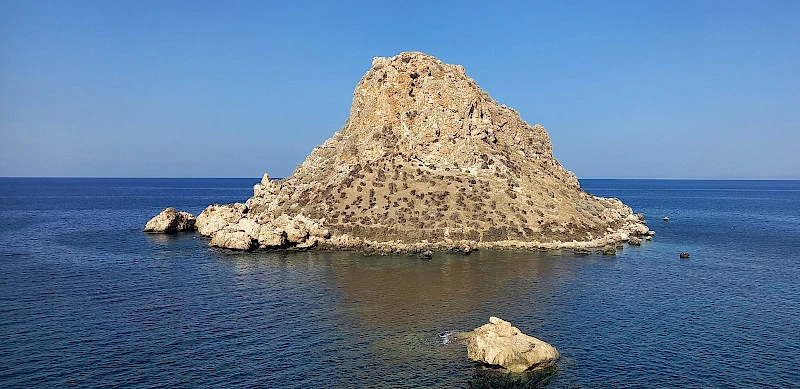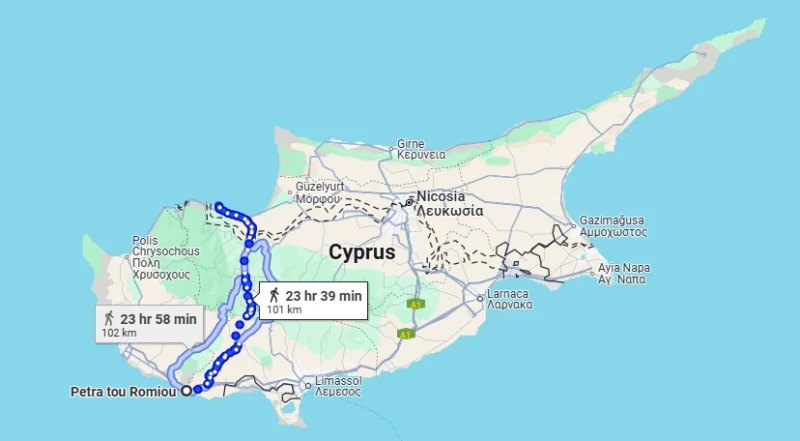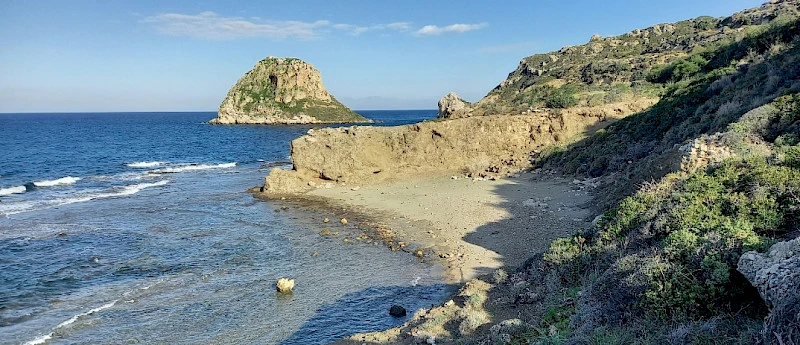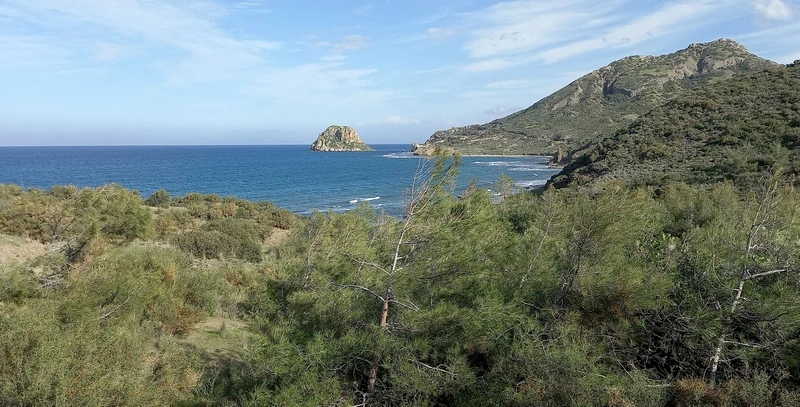Petra tou Limnitis Rock or Yeşilırmak
This small island off the coast of Northern Cyprus was once named after Athena and is aligned with Aphrodite's Rock.
It is also believed that the first people to land on Cyprus arrived here. Let's explore this mysterious island at the westernmost point of the Turkish Republic of Northern Cyprus.
- What the rock looks like
- The name of the rock-island
- The opposite of Aphrodite
- Archaeological excavations
- How to get to the rock
- Frequently asked questions

What the rock looks like
It is an almost perfectly round high island northwest of Vouni, in the northwest of Cyprus, about 80 meters from the shore. Its length is 150 meters, width — 105 meters, and its northern and western sides are steep. The island was one of the settlements during the Pre-Pottery Neolithic period in Cyprus, which began around 8600 BC.
The name of the rock
Since the rock is in Northern Cyprus, it is best to call it by its Turkish name: Yeşilırmak, which translates to "Green River." However, it is better known as Πέτρα του Λιμνίτη — simply "Limestone Rock." Doesn't the Turkish name sound more romantic? It is said that the Greeks once named this rock after the goddess Athena.
The opposite of Aphrodite
An interesting fact — if you draw a straight line southward, at the other end of the island, on the same longitude, lies Cyprus's famous attraction — Aphrodite's Rock, also known as Petra tou Romiou — Πέτρα του Ρωμιού. You can walk from one rock to the other in a day, covering about a hundred kilometers.

Archaeological excavations
When the Swedish Cyprus Expedition led by Einar Gjerstad conducted excavations at Vouni Palace between 1927 and 1931, they also visited this rocky island. The remains of some huts they discovered became the first evidence of the Neolithic period in Cyprus. Separate excavations were conducted in 1929.
The island can only be accessed from the east. Here, there is a small plateau with an uneven surface where the remains of two primitive huts were found. Other finds included flint, bone, and stone artifacts, mainly idols, bowls, and tools. These findings were dated to 8200-5900 / 5600 BC.
It was established that the people living in this region had close ties with Anatolia: obsidian stones, stone axes, and other similar objects were found. During the excavations, archaeologists also discovered flint, bones, needles, various tools, and agricultural implements.

How to get to Petra tou Limnitis
The rock is located near the village of Yeşilırmak in the Lefke district of Northern Cyprus. Public transport can only take you part of the way, but to reach the rock itself, you must swim, so bring a kayak or paddleboard.
By public transport
From Nicosia or Kyrenia, you first need to reach Güzelyurt. Then transfer to a bus to Lefke. You should get off before the turn to Lefke, and from there, you must either take a taxi or find a ride towards Yeşilırmak. From the village, you can only reach the rock on foot or by taxi.
By car
Below on the map, you will find the location and coordinates for a designated parking spot for navigation: 35.17753292158082, 32.731688619793395. After passing through the village of Yeşilırmak, beyond the mosque and cemetery, the road turns to gravel and is of poor quality. A crossover vehicle is recommended, and after rainfall, it is best to use a four-wheel drive.
- If you don't have a car, you can rent one online through the search engine Discover Cars or directly from one of the car rental companies in Northern Cyprus. We explained all the options and procedures in the article "Car rental in Northern Cyprus".

Frequently Asked Questions
What are the working hours of the place?
Access to the rock is available around the clock, as it is a natural attraction. However, there is no lighting, and the rocky shore can be dangerous at night.
How much does the ticket cost?
Petra tou Limniti is free to visit, as there is no security or fencing.
Is there parking near the rock?
If you don't have a 4x4 vehicle, it's better to park at this point, and walk further. However, the road to this point is a dirt road in poor condition, so if your car has very low ground clearance, you'll frequently hit rough spots with the undercarriage.
Follow us on our Instagram and Telegram channel to learn all the most interesting things about the attractions of Northern Cyprus!
- Photo: Nikolay Lebedev

